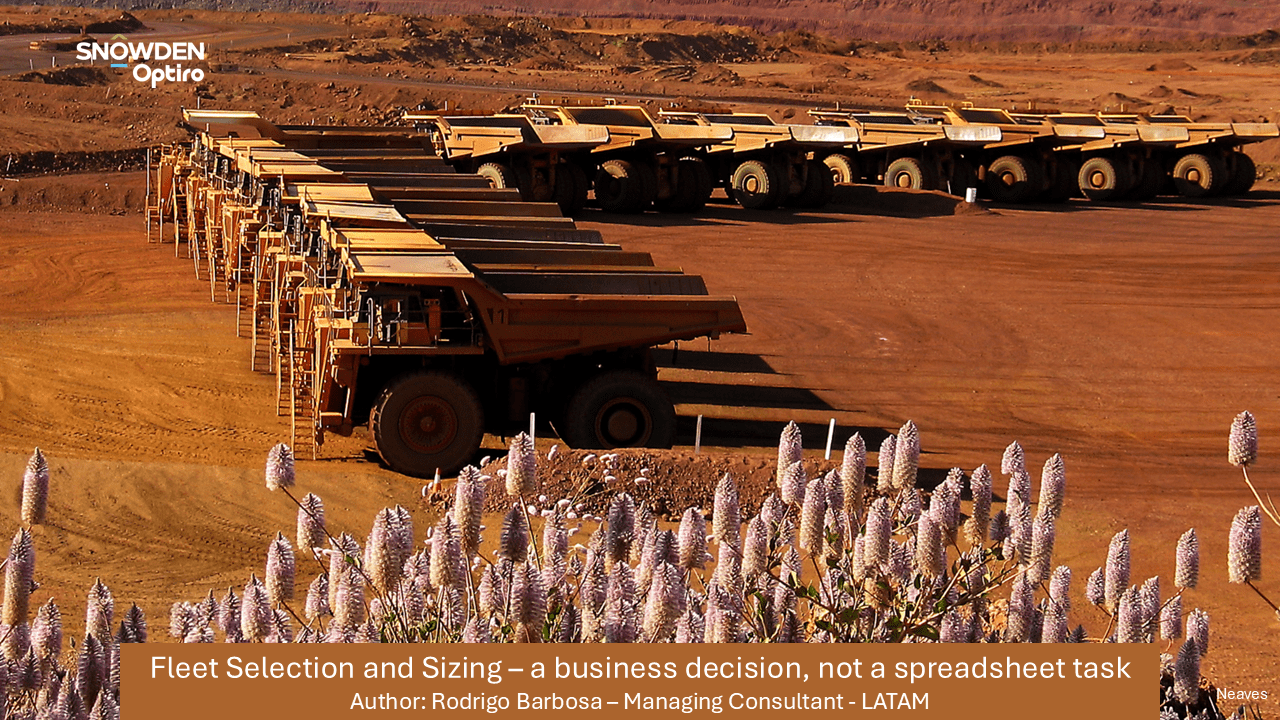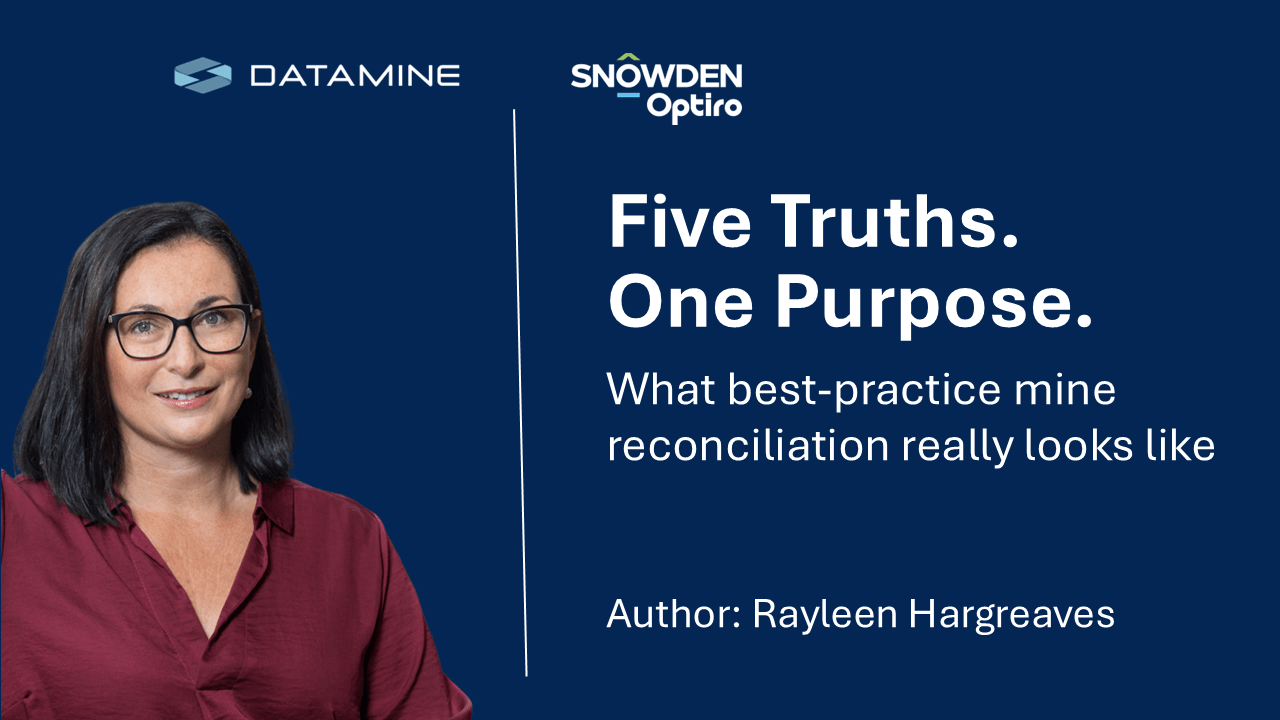
- news, Tech talk
30 Seconds of Reconciliation Information
The goal of our 30 Seconds of Info series is to provide valuable technical information that is concise and easily digestible.
These tips serve as an excellent reference for professionals while working on projects.
We will be regularly updating our series by posting new 30 Seconds of Info each week.
STOCKPILE VOLUMES
Remember that if you have a large stockpile, particularly one which has a second layer on it, you will need to increase the loose rock bulk density as compression will have occurred from trucks driving up on the broken rock.
You may need to increase the loose rock bulk density by as much as 30%.
It may pay to do a volume survey of a discrete area and compare this with the accurate tonnage removal (as measured off the primary crusher weight-ometer) to calibrate the bulk density.
Author: Ian Glacken
RECONCILING ORE ONLY
Don’t get into the habit of excluding the waste material from your reconciliation process.
It is important to be able to monitor the impact of reassigning ore to waste dumps and waste to ore stockpiles/crushers and understand what has instigated the change in material classification.
Was it a decision based on the visible geology or was it a haulage error or misclassification?
Does it have a flow on effect your future mining (models/mine plans)?
Being able to account for changes in material type classification will explain variances between models, mine plans and material movements.
Author: Rayleen Hargreaves
ACCOUNTING FOR DEVELOPMENT VOLUMES UNDERGROUND
Unless development is strictly on lines and the ore is either much wider or much narrower than the development face, the drives may meander and stripping cuts may need to be taken to straighten up the profiles.
Don’t forget to account for any ore stripping at the end-of-month development volumes.
Author: Ian Glacken
MINE PLAN COMPLIANCE AS AN EXTENSION OF RECONCILIATION
Are you following the mine plan?
We don’t build a house without following the plan; so we also shouldn’t be mining without following the plan.
Along with your model reconciliation, you should be aware of how well you are mining to plan.
And not just the weekly or monthly plans, but how well you are mining compared to the annual Budget plan.
Are you seeing month-on-month trends in your mining compared to the plan?
Identifying trends or anomalies in your data early on can save a lot of heartache down the track but it also gives you and the financial stakeholders in your mine confidence in the ability to mine the resource as planned.
Author: Rayleen Hargreaves
GRAB SAMPLES FROM ORE PASSES
Deriving grades from underground ore passes, especially in precious metal mines, is a hit-and-miss activity at best, and may give a woefully biased sample at worst.
However, if you must sample ore passes (and it’s not recommended), lots of small samples (5-10 kg) are taken over a few days, rather than one larger (20-30 kg) sample per shift.
Author: Ian Glacken
NOMENCLATURE OR NAMING CONVENTIONS
Where do we start?
Make sure that the naming conventions used in the model/s are the same as those used in the mine plans and again in the dispatch material movements.
Use a naming location hierarchy that suits your mine and that allows easy roll-up to compare 100% mined areas.
Material types – use the same ones and the same cut-offs across all data.
Stockpiles – have a standard naming convention in place.
Only then will the opportunity to perform meaningful reconciliation become easier.
Author: Rayleen Hargreaves
These 30 Seconds of Info have been brought to you by Executive Consultant Ian Glacken and Principal Consultant and Reconcilor Product Owner Rayleen Hargreaves.
You can read more about them below.
Executive Consultant Ian Glacken
BSc (Hons) (Geology), MSc(Mining Geology), DIC, MSc(Geostatistics), Grad Dip Computing, FAusIMM(CP), FAIG, MIMMM, CEng
Ian is a highly qualified geologist, with postgraduate credentials in geostatistics, mining geology, and computing.
He has over 35 years of extensive experience in the mining industry, having worked on projects worldwide.
His expertise includes resource evaluation, due diligence reviews, public reporting, training and mentoring, quantitative risk assessment, strategic advice, geostatistics, reconciliation, project management, statutory and competent persons’ reporting, and mining geology studies.
With a strong mining production background, Ian is a regular auditor for some of the world’s largest mining companies.
Contact Ian here.
Principal Consultant and Reconcilor Product Owner Rayleen Hargreaves
BSc (Geology, Geophysics, Geochemistry), MAusIMM
Rayleen is a highly experienced mining geologist, with over 25 years of expertise in the resource industry.
She has been actively involved with the onsite implementation and administration of Reconcilor for the past 15 years and has developed a deep understanding of mine site reconciliation.
Leveraging her extensive domain knowledge, Rayleen serves as the Product Owner of Reconcilor, leading the Research and Development team and ensuring that the software’s features and functionality meet the needs of key stakeholders.
She has published numerous white papers on mine reconciliation and is a frequent speaker on the Fresh Thinking by Snowden Optiro podcasts and Tech Tips videos.
Contact Rayleen here.
Related Posts
We provide a lot of great technical content for free!
Subscribe here for our podcasts, technical articles and news


